The Elegant Life Cycle of a Butterfly
From its miraculous metamorphosis to the intricate wing pattern, the butterfly has fascinated people and cultures around the world for millennia. In today’s post, Jaret C. Daniels, author of Vibrant Butterflies, shares with us the life cycle of a butterfly.
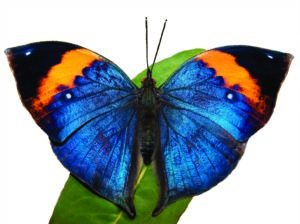
All butterflies go through a life cycle consisting of four distinct stages—egg, larva, pupa (Chrysalis), and adult. Butterflies are one of several insect groups that undergo this complete transition. This process of metamorphosis makes butterflies seem almost magical and enhances their overall interest and appeal. It is also a key component to their evolutionary success. A caterpillar has a very different lifestyle and resource requirements than a butterfly. The developing larvae have chewing mouthparts, feed on plant material, and are generally sedentary. The winged adults are fluid feeders and are highly mobile. This enables both groups to exploit very different food resources, niches, and even habitats, all without competing against one another. This evolutionary strategy also helps them colonize new areas and enhances genetic exchange between populations.
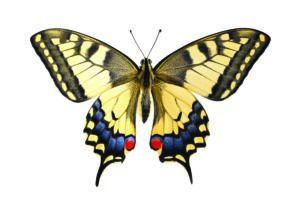
The females of most butterfly species use an adhesive protein secretion to securely glue their eggs to the host plant. This ensures that the eggs remain firmly attached until the young larvae eventually hatch. A butterfly egg is surrounded by a hard outer shell, called the chorion. It helps protect the developing embryo inside from damage, predation, and desiccation (drying out).
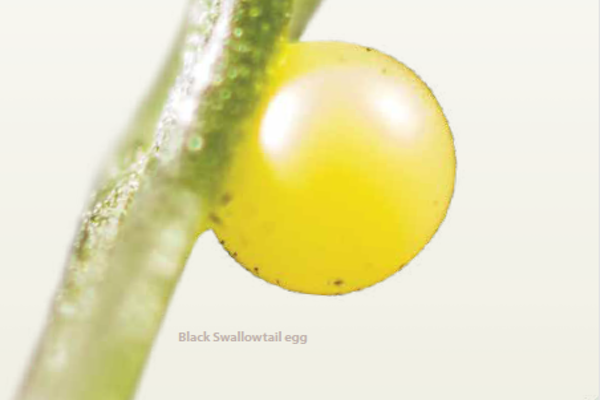
Larval Anatomy
Like that of an adult butterfly, a larva’s body is divided into three distinct sections. The head has short antennae, several sets of simple eyes called ocelli, a spinneret for the production of silk, and a set of powerful mandibles that are perfect for chewing leaves and other plant material. The thorax bears three pairs of true legs that are primarily used for holding and manipulating food. The elongated abdomen typically has five pairs of fleshy prolegs, which aid in locomotion. The tip of each proleg possesses a series of small hooks called crochets that helps the larva maintain a secure grasp when feeding, walking, or resting. Numerous butterfly larvae go to great lengths to conceal their presence, even constructing shelters on their hosts by folding, tying, or joining leaves or other plant parts together with silk.
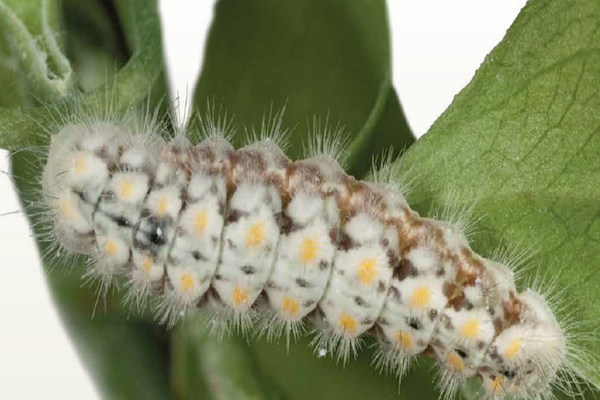
The Chrysalis
When fully grown, each larva seeks a secure location in which to pupate. When ready to pupate, the vast majority of butterfly larvae attach themselves with silk to a leaf, twig, or other substrate. They are now ready to molt for the final time, which reveals the chrysalis. Unlike the somewhat soft and supple larva, the chrysalis is more sturdy and hardened, which is important because the chrysalis is fixed in place and largely defenseless against predation. Therefore, most chrysalises depend on disguise and concealment. Many adeptly blend into the surroundings by resembling leaves or dead twigs and are typically hidden under vegetation or in otherwise obscure sites. Some may thrash about if disturbed or are capable of making audible squeaks or chirps to startle attackers.
Adult butterflies represent the reproductive stage of the butterfly’s lifecycle. The adult butterfly is equipped with large, powerful wings that enable it to fly, affording it the mobility required to find a suitable mate and transport eggs across the landscape. In turn, this ensures effective gene flow, helps butterflies colonize new areas, and maintains viable populations over time. The end game is simple: the survival and success of the species.
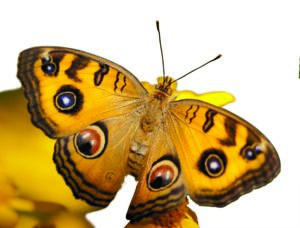
Along with moths, butterflies belong to the incredibly diverse insect order Lepidoptera, which is second only to order Coleoptera (beetles and weevils) when it comes to the total number of insect species. Many are relatively large and easily identified by their prominent wings, which are covered in a myriad of flattened, overlapping, and often brightly colored scales. Of the nearly 160,000 species of Lepidoptera found worldwide, about 18,000 are butterflies. While the vast majority of butterfly diversity occurs in the tropics, North America is home to around 700 different species. In the U.S., Florida and the mountainous West are home to the most butterfly species.
For more stories about wildlife and nature, sign up for our newsletter now!



Pingback: Butterflies—Favorite Visitors to Flowers and Gardens - Adventure Publications